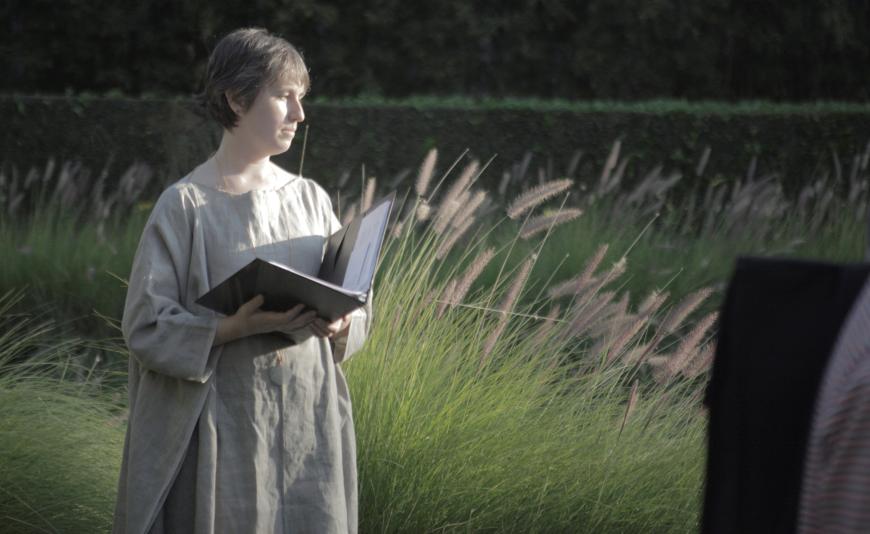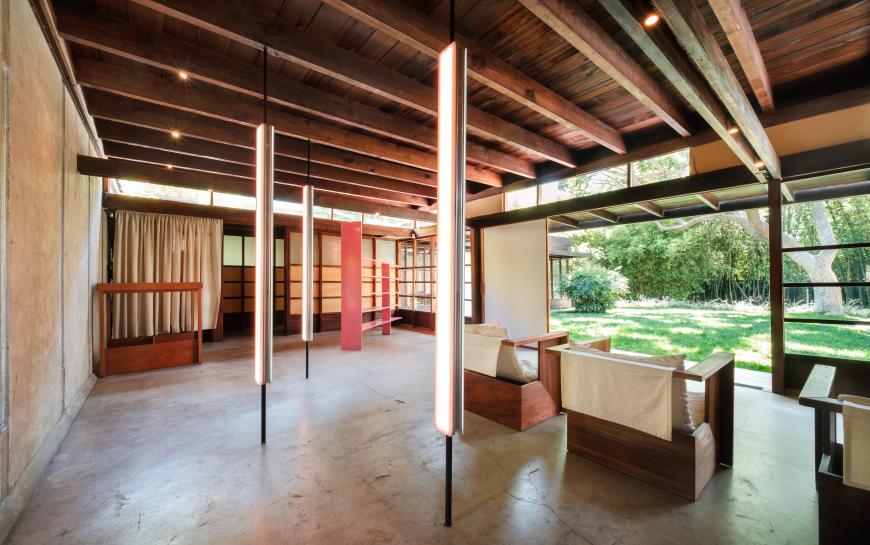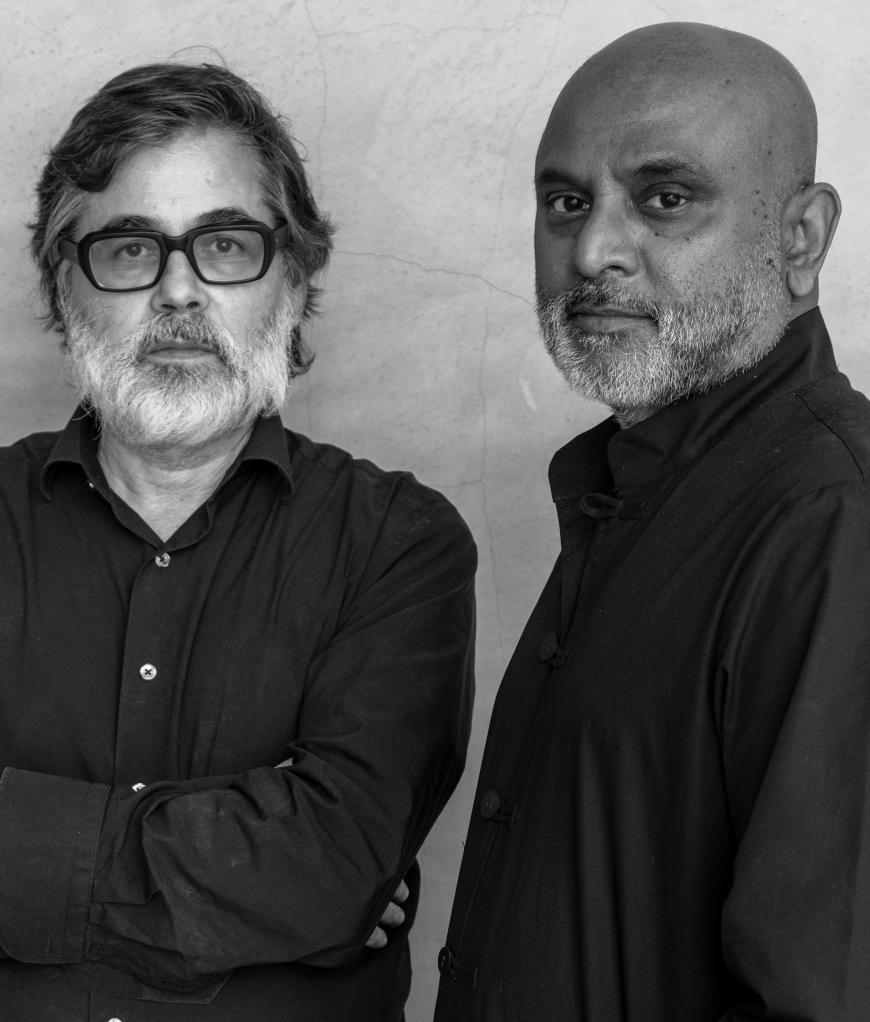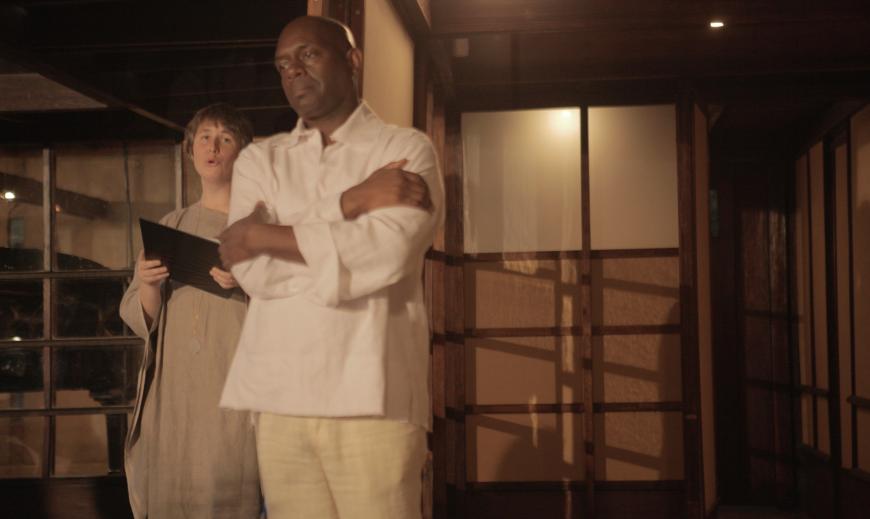
While some people might be familiar with the Austrian-born American architect Rudolph Schindler (1887–1953), whose most important works were built in or near Los Angeles during the early to mid-20th century, his wife Pauline Gibling Schindler (1893–1977) is lesser known. Enter, then, architects Frank Escher and Ravi GuneWardena, who initially staged Pauline: An Opera in 2013 at the Schindler House.
Now, in marking the close of the Schindler House’s 100th-anniversary celebration, the MAK Center for Art and Architecture, a contemporary, experimental, multidisciplinary center headquartered in three landmark buildings on Kings Road in West Hollywood, is presenting the chamber opera on Oct. 1. With concept and libretto by Escher and GuneWardena, the opera features music by important 20th-century composers, including Sergei Prokofiev and Edgard Varèse, whose Density 21.5 for solo flute is performed. Contemporary Minnesota-based composer Mary Ellen Childs also contributed a handful of arias.
The opera, which takes place throughout the Schindler House and in the courtyards, probes the personal and professional experiences of the space through the lens of Pauline’s letters, friendships, relationships with clients, and the dissolution of the Schindlers’ marriage. Its genesis was a 2013 invitation from the MAK Center’s then-director Kimberli Meyer, who proposed a project on the Schindler House. (Jia Yi Gu is the Center’s current director.)

“Ravi and I knew a little about Pauline,” recalled Escher, “and what a fascinating character she was, but underrated. We knew some of her writings, so we proposed this opera — that we would construct a libretto based on her correspondence, her writings, and letters from other people. They accepted that, and we spent about five or six months assembling the whole thing.”
Escher, who is Swiss but speaks German and translated some of the documents in question, noted that the music is by composers that Pauline either knew herself or that she wrote about. “There’s a lot of Henry Cowell, and the entire third act is music by [his pupil] John Cage, including the piece he dedicated to Pauline, who was 20 years older than Cage and [with whom] he had an affair.
“The opera starts with a letter Pauline wrote to her mother,” added Escher, “before she met Rudolph Schindler, and she describes the house she would like to have and how the house should function as a social house where people would connect. She predicted what kind of place she’d like to have — a place that would be open to people from different parts of society, from millionaires to laborers. It’s a short, beautiful letter, and Mary Ellen wrote the aria.”

With mezzo-soprano Argenta Walther as Pauline and tenor Charles Lane as Rudolph Schindler, the score is performed by pianist Todd Moellenberg, cellist April Dawn Guthrie, and flutist Christine Tavolacci. With four acts and a runtime of about 90 minutes, the opera includes the 1912 architectural manifesto that became the intellectual basis for Rudolph’s life’s work. Escher explained that this philosophy, which is also set to Childs’s music, delineates what the architecture of a space should be and that “this was 10 years before Rudolph Schindler built the house.”
Escher pointed out that Pauline and Rudolph either met at the 1918 American premiere of Prokofiev’s Scythian Suite or “at a meeting of either the Communist or Socialist Party. They were both politically very progressive, and the text for that is the wedding announcement her parents sent out.”
Upon completion of their house, visitors — from Edward Weston to Frank Lloyd Wright — assembled, and the corresponding Act 2 music is by Cowell, including his 1923 work Aeolian Harp, as well as Toccanta (1938) and Hymn and Fuguing Tune No. 9 (1950).
And like with many marriages where creativity is rampant, Pauline and Rudolph Schindler, whose son Mark was born in 1922, had their differences. Indeed, Pauline took Mark and left the house five years later and began leading a somewhat nomadic life along the California coast. But she continued to write about and champion Rudolph’s work, with the pair eventually divorcing in 1940.
Act 3 is 30 minutes of Cage music, with the singers improvising the vocal line from his 1934 work Composition for Three Voices. Escher said that the music “follows Cage’s ideas of chance music” and ends with his 1935 letter to Pauline, an epistle wherein he pleads for her love. He would marry Russian-Alaskan artist Xenia Andreyevna Kashevaroff a few days later.
The final act, which ends as the opera began, with excerpts from the third movement of Prokofiev’s Scythian Suite, also features Varèse’s “Un grand sommeil noir,” a score that Pauline had written about for Dune Forum magazine. And in March 1949, Pauline and Rudolph, who was dying of cancer, were living together again in the Schindler House — each, however, occupying half of the abode and communicating only by letter.

If this sounds strange, it’s true, said composer Childs, who has received commissions from, among others, Kronos Quartet, The Saint Paul Chamber Orchestra, and Opera America. “There was a time period when mail was delivered twice a day. It was fairly quick but also hilarious.”
And while Childs wasn’t involved with the 2013 performance, she was contacted last spring by Escher and GuneWardena to “set a few pieces for them,” and she adds that she was “impressed by their vision and research.”
Escher’s vision included the notion that opera would be the ideal art form to dramatize the life of this American composer, educator, editor, and arts promoter. The Vienna-based art publisher Schlebrügge is printing a book with the libretto, archival materials, and several essays.
“When we started thinking about the Pauline Schindler project, it was clear, because of her interest and writing about music — the role music played in her life and the life of the house — that this was a very rich and complex history of different people [who] went in and out of this house, how their lives intertwined. We felt this was best conveyed to an audience in the form of an opera.
“People pay much more attention to the text when it’s sung,” Escher added. “These letters that go back and forth, it’s quite interesting how closely the audience is following every word, either what Pauline or Rudolph Schindler said. This back-and-forth correspondence between the two — it’s really about, in a way, the power of the words but also, of course, the music that was important to Pauline.”

